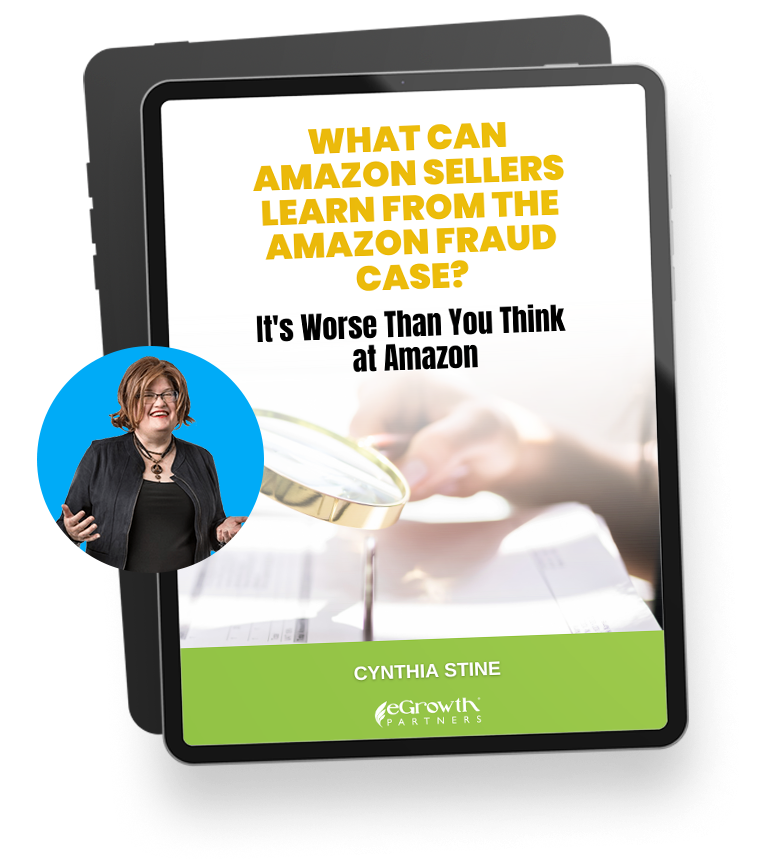When reading this blog post, please remember that the charges against the defendants are accusations and the defendants are presumed innocent until and unless proven guilty in a court of law. This story has valuable lessons for Amazon sellers and consumers alike.
You may have read about the case described in this press release: Combating Crime: Attorney General James and Mayor Adams Take Down Massive Retail Theft and Crime Operation. During the three-year investigation, law enforcement seized more than $3.8 million worth of stolen retail items, more than 550 stolen gift and cash cards, and more than $300,000 in cash from the enterprise’s alleged boss, Roni Rubinov.
Among the merchants targeted by the syndicate were CVS, Walgreens, Duane Reade, Macy’s, Bloomingdale’s, Louis Vuitton, Lowe’s, Banana Republic, Brooks Brothers, Sephora, Rite Aid, Neiman Marcus, Saks 5th Avenue, Starbucks, and Sunglass Hut. Popular merchandise for resale included cosmetics, over-the-counter drugs, coffee, tools, and luxury apparel and accessories.
The grand jury indicted 41 individuals (most of them low-level) for various counts of enterprise corruption, money laundering, criminal possession of stolen property, fraud, and conspiracy.
When I read the indictment, I was struck by how much this alleged criminal enterprise resembled a legitimate business. There was a structured process to obtain inventory, with a lead buyer who managed a team of some 30 boosters (shoplifters). Specialists then inventoried, organized, transported, and stored the goods. A dedicated employee listed it for sale on eBay, and there was a shipping department to send it to buyers. There was even an employee responsible for “business strategy and development – with a focus on expanding the syndicate’s marketing, sales, and profit margins.” I loved this detail: Her efforts included instructing “lower-level employees and the boosters on how to: (1) remove anti-theft devices and security tags from items prior to selling; (2) steal high quality items that have demonstrated resale success; and (3) avoid stealing expired cosmetic and pharmaceutical items that are problematic during the resale process.”
I was also struck by how little the thieves – who were risking serious criminal charges – were paid for their efforts, typically 6-8% of retail value for clothing, and $1-2 per item for cosmetics and OTC medications. I can only imagine that they were desperate people.
Rubinov also bought stolen EBT (Electronic Benefits Transfer) cards – commonly known as food stamps – and used them to buy his personal groceries. Sordid.
Proceeds were quite easily laundered through PayPal and business bank accounts (Rubinov owned a pawn shop). This was not an ‘Ozark’ level enterprise.
Amazon Sellers Vulnerable to Stolen Gift Cards
Stolen gift cards were a significant part of this criminal enterprise. Many eCommerce sellers buy discounted gift cards to purchase inventory without considering the risk of fraud in the gift card resale industry.
Lesson Learned: Always do your own due diligence on the seller. When an offer seems too good to be true, it often is.
There is a footnote which is of special interest to Amazon sellers. Rubinov contracted an eCommerce consultant, Charles Harman, to expand his sales to Amazon. The indictment quotes a phone conversation between the two: “Hey just so you know I had a good meeting with Ana this morning; we did a screen share on Amazon. So, she’ll be probably reaching out to you about how we get our products listed because they all require authorization. Facial creams, Starbucks, everyone we tried. So, you’re going to have to be creative to figure out how to show a receipt.”
In other words, to sell his stolen goods on Amazon, he is going to need to ‘get creative’ and produce ‘receipts’ or invoices to prove to Amazon that his inventory is legitimate. On eBay, since his goods were authentic (but stolen), he was not challenged.
Lesson Learned: the next time you are annoyed by Amazon’s demands for proof that you are selling authentic goods that you acquired legally, remember this lurid tale, and consider how hard it is to compete against sellers who steal their inventory.
Lesson Learned: “Criminal enterprise” isn’t always gangs and mafia. Any insane scheme for selling online is probably happening right now. Roni Rubinov had nearly 40 people willing to shoplift for him on a regular basis in New York City for chump change. He would surely have been on Amazon, too, if he hadn’t been caught before figuring out how to fake his receipts.
Amazon Sellers Don’t Realize Fake Invoices are Illegal
Many Amazon sellers don’t think faking an invoice is a crime. They see it as a way to sell their legally purchased retail arbitrage or other gray market goods in a restricted category. They believe Amazon is being too punitive and “difficult” with sellers.
These sellers hire service providers who guarantee them category approval. There is no way a reputable service provider can promise that. If you have legitimate invoices from the manufacturer or authorized distributor, your chances are good to be accepted.
If you had legitimate invoices, you would not need the service provider, right? This means that your service provider will be either forging invoices and both of you hope you don’t get caught, or they are bribing someone at Amazon to accept your invoices. Both approaches are illegal acts. Not just against Amazon’s Business Solutions Agreement. Illegal. A criminal enterprise, in fact.
The fact that we’ve been telling sellers this for years at eGrowth Partners shows you how pervasive the feeling is among the community that Amazon is unfair and punitive. When sellers get caught and banned from the platform, they come to us, and we must turn them away. Be smart. Amazon is serious about invoices.
Invoices the Amazon Way
This is a good time to review Amazon’s invoice requirements. Here’s what they ask for:
The invoice you submit must meet the following criteria:
- The invoice must show the combined purchase of at least 10 units of the product you are applying to sell.
- The invoice must include the manufacturer or distributor’s full business address, website URL, or phone number.
- The invoice must be in the PDF or JPEG file format.*
- All information must be unobscured and easy to read. However, you may omit/cross-out pricing information.
- The invoice must be issued within 180 days of the day you submit your application for category permission. [Sometimes Amazon asks for a full year’s worth of invoices for inauthentic claims so be prepared.]
- The invoice must include your name and full address, matching the information in your selling account.
- The invoice must include the manufacturer or distributor’s name.
*We recommend full color as well.
The following will not be accepted for category approval:
- Retail receipts, online order confirmations, packing slips, bill of lading documents, or any purchase document that is not an invoice from the product manufacturer or an authorized distributor.
- Invoices in editable formats such as Word or Excel
- Self-issued invoices or invoices where the supplier appears to be the same business entity as the buyer.
- Sales quotes, sales orders, pro-forma invoices, or any document that is sent in advance of a finalized invoice.
Amazon’s Note: We may validate your invoice by contacting product vendors you identify in your application. In agreement with our policies, not every request to sell a product will be approved. To ensure you have the correct documents for approval, please review the application requirements from the Selling Applications page before submitting your request.
What happens if you can’t meet these requirements and instead decide to test your photoshopping skills, or use the services of an ‘ungating service’? Odds are good that you will be permanently suspended, with this kiss-of-death message:
“We reviewed your account and the information you provided, and we have decided that you may no longer sell on Amazon. Why is this happening? You have supplied documentation to Amazon which appears to be forged or manipulated.”
There is no coming back from this suspension, and Amazon is very likely to hold all your payouts as well. Do. Not. Do. It.
Between machine learning and human review, you will be caught. And yes, Amazon does call suppliers to verify invoices.
What can you do to ensure that Amazon will accept your invoices? Here are some tips:
- Read the requirements carefully, and make sure that you meet them all:
- Buyer name and address must match the information in your selling account
- 10 units or more
- Supplier’s full name and contact info
- PDF or JPEG format
- Legible – only pricing may be redacted
- Dated within 180 days of application
- Make it easy for Amazon to contact your supplier. Let your supplier know that Amazon may call them. Include the full name and business contact information for your manufacturer or distributor. Provide a direct phone number and website URL. Amazon will use this to evaluate the supplier. Often Amazon goes to the company website and calls the main number just to make sure the information from the seller is legit. Don’t even think about giving Amazon the number to a buddy to lie for you.
- Make sure that your name and address on the invoice exactly match your details in your selling account. Make sure that ALL legal business addresses for you are added to your account, including your warehouse.
- Include a cover sheet that summarizes what the invoice says. This makes it easy for Amazon.
Receipts vs. Invoices According to Amazon
All my arbitrage clients are reading this and saying, “What do you mean receipts aren’t accepted?!?” They aren’t accepted for category/restricted product approvals. You can still use receipts to fight infringement complaints. Sometimes Amazon will accept them for inauthentic complaints. If you are selling a Coach® handbag purchased from a Coach store, a receipt is likely to be accepted. If you are selling a Coach handbag bought from a department store or discount store? Not likely.
This makes things dicey for sellers who are buying (or stealing as in the indictment) from general retail outlets whether in-person or online. CVS, Target, Walmart, and the like are not authorized distributors or resellers of branded goods. They are retailers. As such, their receipts are often rejected by Amazon. And don’t get me started with discount stores, thrift stores, liquidators, or pawn shops. Buy at your own risk. These are not easy reinstatements.
And yes, I’m aware of the first sale doctrine, but I’m also aware that Amazon does not support the arbitrage model on the platform. They prefer brands and wholesalers. They’ve made no secret about that, and they make it as hard as possible to sell in a non-favored model. They can say “no” without explanation or legal repercussions so…sell at your own risk.
Have you noticed a huge uptick in drop-shipping account suspensions lately? Non-favored model. It’s only going to get worse. I’ve worked with successful arbitrage sellers and drop-shippers, but they will tell you it is a lot harder than it used to be. They must be buttoned up to stay on the platform. That’s also why you see so much cheating and bad behavior.

Does the word “compliant”
make you want to scream?
Selling on Amazon is full of landmines.
Whether it is managing your ads and promotions on Amazon, creating new listings, or reconciling shipments and removing negative feedback, our team provides affordable, compliant services customized to meet your business’ needs.




